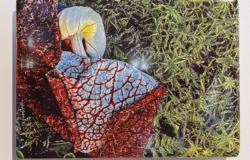Scientists searching for the origins of COVID-19 have compiled a shortlist of animals that may have helped it spread to humans, which they hope will help them trace the outbreak to its source.
The researchers analyzed genetic material collected from the Chinese market where the first outbreak was detected and found that the most likely animals were raccoon dogs, civet cats and bamboo rats. Scientists suspect that infected animals were first brought to the Wuhan market in late November 2019, which sparked the pandemic. Michael Worobey, one of the authors of the new study, said they found which subpopulations of animals may have spread the coronavirus, which could help researchers identify the natural reservoir of COVID-19. “For example, in the raccoon dogs, we can show that the raccoon dogs that were in the market were a subspecies that circulates more in southern China,” said Worobey, an evolutionary biologist at the University of Arizona.
Knowing this could help researchers understand where the animals came from and where they were sold. Scientists could then start collecting samples from bats in the region, which are known to be natural reservoirs of related coronaviruses like SARS. While the research bolsters the theory that COVID-19 emerged from animals, it doesn’t resolve the polarized political debate over whether the virus instead escaped from a research lab in China. Mark Woolhouse, a professor of infectious diseases at the University of Edinburgh, said the new genetic analysis suggested the pandemic “had its evolutionary roots in the market” and that it was highly unlikely that COVID-19 infected people before it was identified in the Huanan market. “This is an important finding that tilts the balance in favor of an animal origin,” said Woolhouse, who was not associated with the research. But it is not conclusive.”
A World Health Organization-led panel of experts concluded in 2021 that the virus likely jumped to humans from animals and that a lab leak was “extremely unlikely.” WHO chief Tedros Adhanom Ghebreyesus later said it was “premature” to rule out a lab leak. An AP investigation in April found that the search for COVID’s origins in China had stalled amid political infighting and missed opportunities by local and international health officials to narrow the possibilities. Scientists say they may never know for sure where exactly the virus came from. In the new study, published Thursday in the journal Cell, scientists from Europe, the United States and Australia analyzed data previously published by experts at the Chinese Center for Disease Control and Prevention. The data included 800 samples of genetic material collected by Chinese workers on January 1, 2020, at the Huanan Seafood Market, the day after Wuhan municipal authorities sounded the alarm about an unknown respiratory virus.
Chinese scientists published the genetic sequences they found last year, but did not identify any of the animals that could be infected with the coronavirus. In the new analysis, the researchers used a technique that can identify specific organisms from any mix of genetic material collected from the environment. Worobey said the information provides “a glimpse into what was happening (at the market) before the pandemic started,” and genetic analyses like theirs “help fill in the gaps in how the virus may have started to spread.” Woolhouse said the new study, while important, leaves some crucial questions unanswered. “There’s no doubt that COVID was circulating in that market, which was full of animals,” he said. “The question that still remains is how did it get there?”
Caption and photo credit: An elderly patient receives an intravenous drip while using a ventilator in the hallway of the emergency department in Beijing, Thursday, Jan. 5, 2023. (AP Photo/Andy Wong, File)






